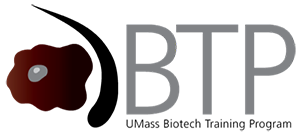 Adam Fish – NIH Trainee 2022-2024
Adam Fish – NIH Trainee 2022-2024
Research Progress: I am a PhD student in the Kulkarni lab where I am studying the effects of shear stress on innate immune cell activation. I am currently studying the effects of shear stress on both Sigal 1 and Signal 2 of NLRP3 inflammasome activation. For Signal 1, we investigated and determined that shear stress selectively primes the NLRP3 inflammasome for activation by affecting the expression of transcription factors p65 and p52 NF-kB through mechanosensitive ion channel Piezo1. I am investigating how mitochondrial ROS formation is affected by shear stress. Additionally, we performed an inhibitor study with a Piezo1 inhibitor called Dooku1 where we demonstrated in reduced NLRP3 and Piezo1 expression. The next step is to perform capillary western to determine how shear stress affects protein expression in macrophages. For Signal 2, we have determined that shear stress affects NLRP3 inflammasome activation through Piezo1 and increases calcium influx. Performing qPCR also determined an increase in Piezo1 and CXCL2 expression. We want to also look at ROS formation via flow cytometry to determine if Piezo1 activation leads to an increase in inflammasome activation. Lastly, we will be performing a similar inhibitor study and western to look at protein expression. While both of these signals activate the same mechanosensitive ion channel, the applications of these studies are disease specific. Certain physiological environments where these phenomena can occur in the body occur in specific diseases associated with NLRP3 inflammasome activation.
Publications:
Nguyen, A.; Ramesh, A.; Fish, A.; Kulkarni, A. Dual-Sensing Nanoreporter for Dynamic and High-Throughput Monitoring of Immune Checkpoint Inhibitor Responses in Tumor-Derived Organoids. Advanced Functional Materials. 2024. https://doi.org/10.1002/adfm.202400393.
Fish, A.; Kulkarni, A. Flow-Induced Shear Stress Primes NLRP3 Inflammasome Activation in Macrophages via Piezo1. ACS Appl. Mater. Interfaces 2024. https://doi.org/10.1021/acsami.3c18645.
